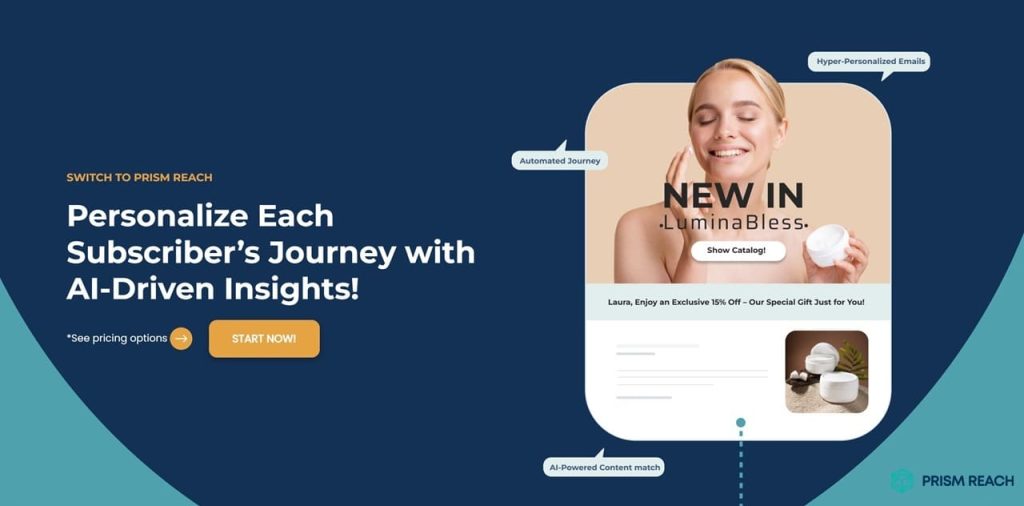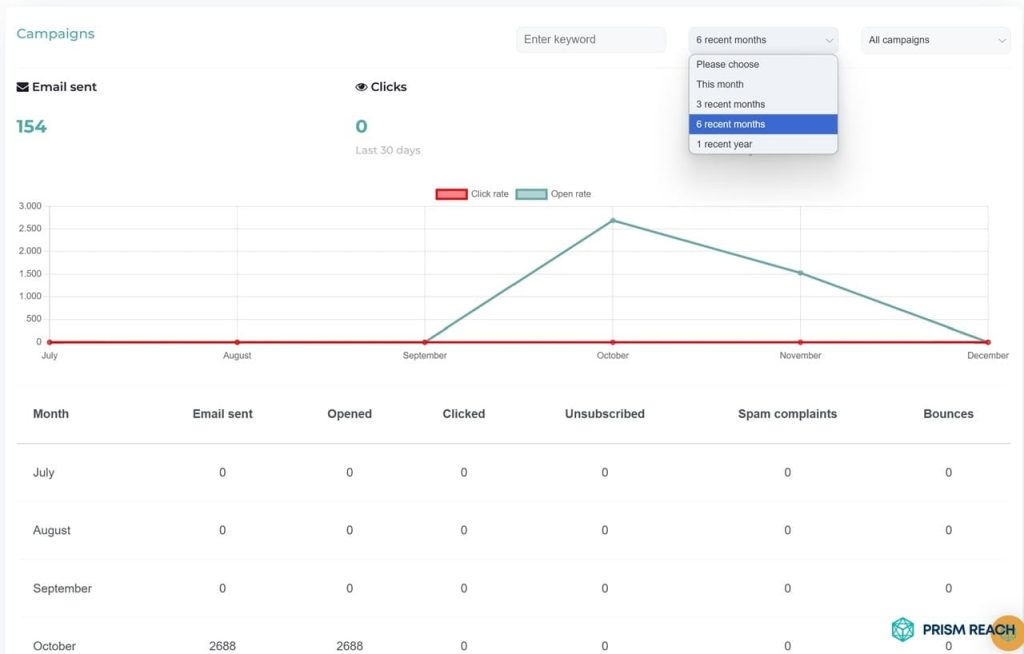In the ever-evolving landscape of digital marketing, email remains a cornerstone of customer engagement and conversion. However, the true impact of email campaigns often remains elusive without proper attribution. Understanding how marketing attribution works in email is crucial for marketers seeking to optimize their strategies and demonstrate ROI in an increasingly data-driven industry.
As businesses strive to create more personalized and effective email campaigns, the role of attribution has become more critical than ever. With the rise of AI-powered tools and multi-channel marketing approaches, marketers need a clear understanding of how each email interaction contributes to the customer journey. This article delves into the intricacies of email marketing attribution, exploring its mechanisms, benefits, and the transformative impact it can have on marketing strategies.
Key Facts
- Marketing attribution in email identifies and assigns value to email campaigns that drive conversions, helping marketers understand the true impact of their efforts.
- According to Emma Email Marketing, multi-touch attribution models can increase the perceived value of email marketing by up to 30% compared to single-touch models.
- Effective email attribution can lead to a significant boost in ROI, with some businesses reporting up to a 40% improvement in campaign performance after implementing sophisticated attribution strategies.
- The global email marketing market is expected to grow to $17.9 billion by 2027, highlighting its growing importance in business strategies.
- AI-powered tools like Prism Reach can boost engagement rates by up to 40% through enhanced personalization.
The Multifaceted Role of Email Marketing Attribution

The Essence of Email Marketing Attribution
Marketing attribution in email is fundamentally about tracing the path from email interactions to customer actions. This process is crucial for understanding the effectiveness of email campaigns and their role in driving conversions. It involves meticulous tracking of user behavior, from the moment an email is opened to the final purchase decision.
By analyzing data across multiple touchpoints, marketers can assign appropriate credit to each email campaign that influences the customer’s journey. This attribution process is not just about measuring success; it’s about gaining insights into the customer’s decision-making process. As Emma Email Marketing expert Sarah Johnson aptly puts it, “Attribution is the compass that guides email marketers through the complex customer journey, revealing the true value of each interaction.”
This metaphor underscores the navigational role attribution plays in the often convoluted landscape of customer engagement. By providing a clear map of customer interactions, attribution enables marketers to understand which elements of their email campaigns are most effective in moving customers towards conversion.
Tracking User Actions: The Foundation of Attribution
The cornerstone of email attribution is the tracking of user actions. This encompasses a wide range of interactions, including email opens, link clicks, and subsequent activities on websites or apps. Each of these actions provides valuable data points that contribute to a comprehensive understanding of the customer journey.
However, the real challenge lies in interpreting this data within the context of various attribution models. Single-touch models, such as first-click or last-click attribution, offer a simplified view by assigning all credit to a single interaction. While these models are straightforward to implement and understand, they often fall short in capturing the true complexity of customer decision-making. The customer journey is rarely linear, and decisions are often influenced by multiple touchpoints over time. As a result, single-touch models can lead to an oversimplified and potentially misleading view of campaign effectiveness.
This limitation has led many marketers to seek more sophisticated attribution approaches that can better reflect the nuanced reality of how customers interact with email campaigns and make purchasing decisions.
Multi-Touch Attribution Models: A Comprehensive Approach
Multi-touch attribution models represent a more nuanced and comprehensive approach to understanding the customer journey. These models recognize that customer decisions are typically influenced by multiple interactions across various touchpoints. By distributing credit across these touchpoints, multi-touch models provide a more accurate representation of each email’s contribution to the final conversion.
Position-based attribution, for example, assigns equal importance to the first and last interactions while distributing the remaining credit across intermediate touchpoints. This approach acknowledges the significance of both initial engagement and the final push towards conversion. Time-decay models, on the other hand, operate on the principle that more recent interactions have a stronger influence on the customer’s decision. These models assign progressively more weight to touchpoints as they get closer to the conversion event.
The choice between different multi-touch models can significantly impact how marketers perceive the value of their email campaigns. As digital marketing analyst Tom Chen points out, “Switching from a last-click to a multi-touch attribution model can reveal that email plays a much larger role in driving conversions than previously thought, often increasing its perceived value by 20-30%.” This insight underscores the potential for multi-touch attribution to reveal hidden value in email marketing efforts.
Advanced Attribution Strategies: Beyond Email Metrics
Advanced attribution strategies extend beyond the confines of email-specific metrics to encompass a broader view of the customer journey. These approaches recognize that email marketing does not exist in isolation but is part of a larger ecosystem of marketing channels and customer touchpoints. By incorporating data from multiple channels, advanced attribution strategies provide a holistic view of how email campaigns interact with and influence other marketing efforts.
This comprehensive approach allows marketers to understand the “halo effect” of their email campaigns – the indirect impact they have on brand awareness, customer engagement, and conversions across other channels. For instance, an email campaign might not directly lead to a purchase, but it could prompt a customer to search for the brand online or visit a physical store, ultimately resulting in a conversion through a different channel.
Advanced attribution strategies are designed to capture these complex interactions and provide a more accurate picture of email marketing’s true impact on overall marketing performance. By revealing these hidden connections, marketers can make more informed decisions about resource allocation and campaign optimization across all channels.
Implementing Effective Attribution: Tools and Data Integration
Implementing effective attribution requires a sophisticated toolkit and a robust approach to data integration. Marketers must leverage advanced software solutions that can collect, process, and analyze vast amounts of data from various sources. This typically involves combining data from email marketing platforms, Customer Relationship Management (CRM) systems, and web analytics tools to create a comprehensive view of the customer journey.
The integration of these diverse data sources allows for more accurate tracking of cross-device interactions, providing insights into how customers engage with email campaigns across different platforms and devices. This level of detail is crucial for understanding the true impact of email marketing efforts on long-term customer value. Moreover, effective attribution implementation often requires collaboration between different departments within an organization, including marketing, IT, and data analytics teams. The complexity of this process underscores the need for organizations to invest in both technology and talent to fully leverage the power of attribution.
By creating a unified view of customer interactions across all touchpoints, marketers can gain deeper insights into the role of email in the overall customer journey and make data-driven decisions to optimize their marketing strategies.
Integrating Hidden Gem Strategies
To elevate your email marketing attribution efforts, integrating lesser-known but highly effective strategies can make a significant impact. Here are five hidden gem strategies that can transform your email marketing attribution approach:
1. Custom Attribution Models
Develop personalized attribution models that align with your specific business goals and customer journey. This approach allows you to assign value to each touchpoint based on its relevance and contribution to conversions, providing a more tailored understanding than standard models.
2. Utilize Behavioral Segmentation
Implement behavioral segmentation to analyze how different customer segments interact with your emails. By attributing conversions based on specific behaviors (like repeat purchases or engagement levels), you can refine your email strategies to cater to these segments effectively.
3. Attribution Window Testing
Experiment with different attribution windows (e.g., 7-day, 14-day, 30-day) to see how they affect your conversion data. Understanding the optimal window for your audience can provide clearer insights into the impact of your email campaigns over time.
4. Leverage Machine Learning for Attribution
Utilize machine learning algorithms to analyze customer interactions and predict which touchpoints are most likely to drive conversions. This data-driven approach can uncover insights that traditional models may overlook, making it easier to optimize email campaigns.
5. Create a Unified Dashboard for Attribution
Develop a centralized dashboard that consolidates attribution data from all marketing channels, including email. This unified view allows for easier tracking and analysis of performance across campaigns, facilitating more informed decision-making.
Prism Reach: Enhancing Email Marketing Effectiveness
Prism Reach is an innovative AI-powered SaaS solution designed to enhance the effectiveness of email marketing campaigns through deep personalization. By transforming how publishers and content creators engage with their audiences, Prism Reach leverages sophisticated AI algorithms to customize every aspect of newsletters based on subscriber behavior and preferences.
Company and Product Overview
Prism Reach’s core functionality revolves around its proprietary AI technology, which clusters website content and social media posts into relevant categories. This AI uses a variety of data points to create detailed user avatars, enabling personalized newsletter content that incorporates factors such as location, engagement history, and predicted interests. The system’s ability to analyze vast amounts of data allows for highly targeted marketing strategies.
Target Audience
The primary users of Prism Reach are publishers across various platforms, including international media outlets, blogs, and forums. The company is also expanding into the eCommerce sector, aiming to leverage its technology to enhance digital marketing efforts in this rapidly growing area.

Key Features
- AI-Powered Personalization:
- Content Clustering: Utilizes both open and proprietary AI models to categorize content effectively.
- User Avatars: Enriches user data for creating highly personalized profiles.
- Personalized Introductions: Generates custom introduction paragraphs for each subscriber using advanced data analytics.
- Optimal Sending Times: Uses predictive analytics to determine the best times to send newsletters, maximizing subscriber engagement.
- Seamless Setup and Integration:
- Quick Setup: The platform can be integrated within 10 minutes, making it user-friendly.
- One-Click Uploads: Facilitates easy migration of existing subscriber lists.
- AI-Enhanced Sign-Up Forms: Designed to increase sign-up rates through AI-generated content tailored to the user’s context and improve GDPR compliance.
- Dynamic Content Selection: The AI determines the most relevant content for each subscriber, enhancing the personalization of each newsletter.
- Advertising Network and Swap Network:
- Targeted Advertising: Provides a platform for targeted advertising similar to major online ad networks, allowing for precise ad placement based on subscriber data.
- Mutual Promotion: Facilitates mutual promotion among publishers, broadening content reach and enhancing subscriber engagement.
- Advanced AI Features:
- Anti-Spam Checks: Ensures emails comply with anti-spam regulations, maintaining high deliverability rates.
- High Deliverability Focus: Crucial for maintaining engagement levels and avoiding spam filters.
Benefits of Prism Reach
- Enhanced Personalization: Prism Reach’s AI-driven user avatars and content clustering provide deep personalization, ensuring each email resonates with individual subscribers.
- Accurate Attribution: The platform’s machine learning capabilities enable precise attribution, identifying which email touchpoints are driving conversions and optimizing accordingly.
- Unified Data Insights: Prism Reach’s unified dashboard consolidates attribution data from all channels, offering a comprehensive view of campaign performance and facilitating informed decision-making.
User Journey
The typical user journey with Prism Reach involves a streamlined process where subscribers sign up through a customized form, select their interests, and then receive personalized newsletters that cater specifically to their preferences. This journey enhances user satisfaction and boosts the likelihood of long-term subscriber retention.
Compliance and Data Privacy
Prism Reach emphasizes GDPR compliance and hosts data within Europe, adhering to the highest standards of data protection. This focus on privacy is crucial for building trust with users and complying with international regulations.
Future Prospects
Looking ahead, Prism Reach aims to expand its technology into the eCommerce sector and explore new ways to leverage AI for broader marketing applications. The company is committed to continuously improving its AI algorithms, ensuring that its solutions remain at the cutting edge of technology and marketing innovation.
Practical Tips for Effective Marketing Attribution in Email
To maximize the benefits of marketing attribution in your email campaigns, consider the following practical tips:
1. Leverage Custom Attribution Models
- Develop attribution models that align with your specific business goals and customer journeys.
- Assign value to each touchpoint based on its relevance and contribution to conversions.
- Use tools like Prism Reach to customize and implement these personalized attribution models effectively.

2. Utilize Behavioral Segmentation
- Segment your audience based on behaviors such as repeat purchases, engagement levels, and browsing patterns.
- Analyze how different segments interact with your emails to refine your strategies.
- Prism Reach can help automate behavioral segmentation, providing deeper insights into customer interactions.
3. Attribution Window Testing
- Experiment with different attribution windows to determine which timeframe best captures the impact of your email campaigns.
- Analyze conversion data across various windows to identify the optimal period for your audience.
- Use Prism Reach’s analytics tools to facilitate and track attribution window tests.
Enhancing Email Marketing Strategies with Prism Reach
Integrating Prism Reach into your email marketing attribution strategy can significantly enhance your efforts. Here are three specific places where screenshots of Prism Reach can be particularly helpful:
- Unified Attribution Dashboard: Visual representation of how Prism Reach consolidates attribution data from all marketing channels, providing a comprehensive view of campaign performance.
- Behavioral Segmentation Analysis Tool: Showcasing Prism Reach’s capabilities in segmenting audiences based on detailed behavioral data, enhancing the precision of your email campaigns.
- Machine Learning Attribution Model Setup: Displaying how Prism Reach’s machine learning algorithms are configured to analyze customer interactions and predict conversion-driving touchpoints.
Upgrade Your Email Marketing with AI Personalization!
Conclusion
Marketing attribution in email is a complex but essential aspect of modern digital marketing. By understanding how different interactions contribute to conversions, marketers can refine their strategies, allocate resources more effectively, and demonstrate the true value of their email campaigns. As attribution models continue to evolve, embracing advanced tools like Prism Reach will be crucial for staying ahead in the competitive landscape of email marketing.
The future of email marketing lies in personalization and precise attribution. By leveraging AI-powered solutions and adopting sophisticated attribution models, marketers can unlock the full potential of their email campaigns, driving higher engagement, conversions, and ultimately, business growth.
Sources
- Emma Email Marketing & Automation. (n.d.). Email marketing attribution: How to measure the impact of your email efforts.
- Fresh Relevance. (n.d.). How to adapt email attribution to the customer journey.
- Weberlo. (n.d.). Marketing attribution models: Mapping the customer journey to maximize ROI.
- Convertcart. (n.d.). Ecommerce Lead Nurturing Emails.
- Adobe Experience Cloud. (n.d.). Lead Nurturing Emails.
- HubSpot. (n.d.). 5 Best Practices for Lead Nurturing Emails.